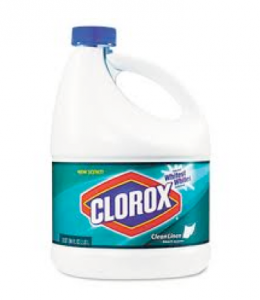Endodontic Irrigation
With many advancements in the field of endodontics over the last thirty years, our main goal in root canal therapy still remains the same.
Eradication of microorganism as well as organic and inorganic debris from within the canal system is our primary objective. We achieve this goal not only through direct debridement with our endodontic files but also through our endodontic irrigants. The range of micro-organisms within a canal system can be as complex as the internal anatomy within each root. Intracanal irrigants are utilized during root canal therapy to aid in disinfection of the resilient bacteria found within hard to reach areas of the canal system.
 In addition to disinfection, irrigants can also help remove the smear layer from the radicular wall. The smear layer consists of organic and inorganic substances the cover the root canal walls during instrumentation. In order for our irrigants to have access to the dentinal tubules within the root, this smear layer should be removed.
In addition to disinfection, irrigants can also help remove the smear layer from the radicular wall. The smear layer consists of organic and inorganic substances the cover the root canal walls during instrumentation. In order for our irrigants to have access to the dentinal tubules within the root, this smear layer should be removed.
There are several ideal properties for an endodontic irrigant. The solution should disinfect, penetrate dentin, remove smear layer, dissolve organic tissue and be non-toxic to the per-apical tissue. Currently there is not one irrigant alone that can offer all of these properties. In our practice we currently use a combination of irrigants to provide a desirable end result. I have summarized the irrigants we use in our practice below. I also wanted to include the rationale for choosing each irrigant and include a little about how each solution is delivered into the canal space.
- NaOCL: The gold standard. Sodium Hypochlorite is the most commonly used endodontic irrigant in our practice. NaOCl provides excellent antimicrobial properties and dissolves pulp tissue. We use a 5.25 % solution in our practice. Sodium Hypochlorite is inexpensive and can be purchased easily. Exposure of the solution to oxygen can reduce its activity which may be a disadvantage to buying NaOCL in large containers where it may sit for an extended period of time. Of course the main disadvantage of Sodium Hypochlorite is the potential for injury if it is extruded beyond the apical foramina and into the periradicular tissue. The use of irrigation tips with a side vent is important and remembering to place the needle passively into the canal. It is important to remember that NaOCL is not effective against all types of bacteria nor does it remove the smear layer. Additional irrigants are crucial to complete disinfection.
- Chlorohexidine: This solution has a broad-spectrum antibacterial action and has a substantive effect in the canal. The substantive property offers a long-term antibacterial action. There are also reports that Chlorohexidine is more effective against E.Faecalis, a species of bacteria commonly seen in refractory endodontic infections. Similar to NaOCl, CHX is unable to target all species of bacteria and cannot remove the smear layer. I am more apt to use this solution deep in a canal where the apex is unusually large or has not fully formed.
- EDTA: Ethylenediaminetetraacetic Acid. This solutions primary function is to remove the inorganic component of the smear layer. Research has demonstrated that bacteria can penetrate into the dentinal tubules where they are difficult to eradicate. Removing the smear layer allows the subsequent irrigant access into the open tubules. Long exposure of this solution can alter the integrity of the root dentin. EDTA does not have an antibacterial effect.
- Alcohol: We will often use ethyl alcohol to decrease the surface tension within the canal and to help clean the pulpal floor and axial walls. Alcohol can dehydrate dentin, but can be very useful to help remove excess sealer or deactivate any eugenol prior to bonding.
Our goal is to administer NAOCL and EDTA in between the pass of each file. After my final rinse of EDTA, I like to irrigate with Chlorohexidine for thirty seconds. Additionally, we will use ultrasonic tips to help agitate the solution within the canal system. We routinely use a 30 gauge, side vented, needle.
We use the four irrigants above in each and every case. We have tried other commercially available solutions (MTAD) in the past and but continue to revert back to our workhorses, NAOCL, CHX, EDTA and Alochol. If there are any irrigants you may find helpful in your practice, please let us know- we are always aiming to improve and explore new avenues of disinfection.
Thank You
**In writing this blog, I utilized information from the AAEs Colleague for Excellence, Winter 2011.
Full access to this report can be found here : http://www.aae.org/uploadedfiles/publications_and_research/endodontics_colleagues_for_excellence_newsletter/rootcanalirrigantsdisinfectants.pdf
Thanks for visiting us at Tri City and Fallbrook Micro Endodontics. We provide root canal treatment to residents throughout the greater San Diego, CA area.
